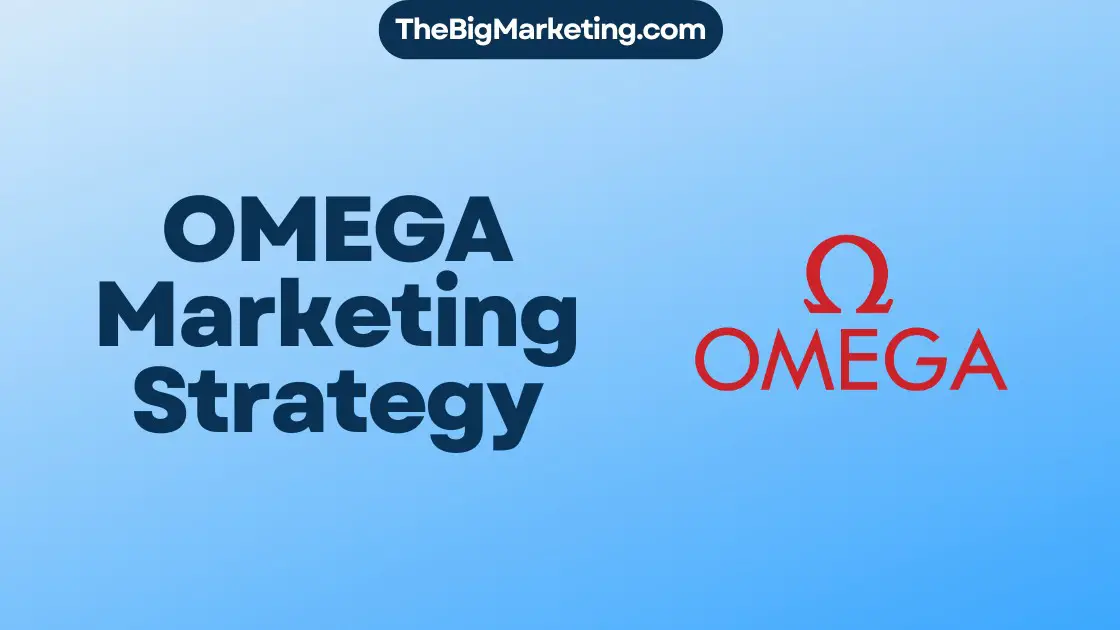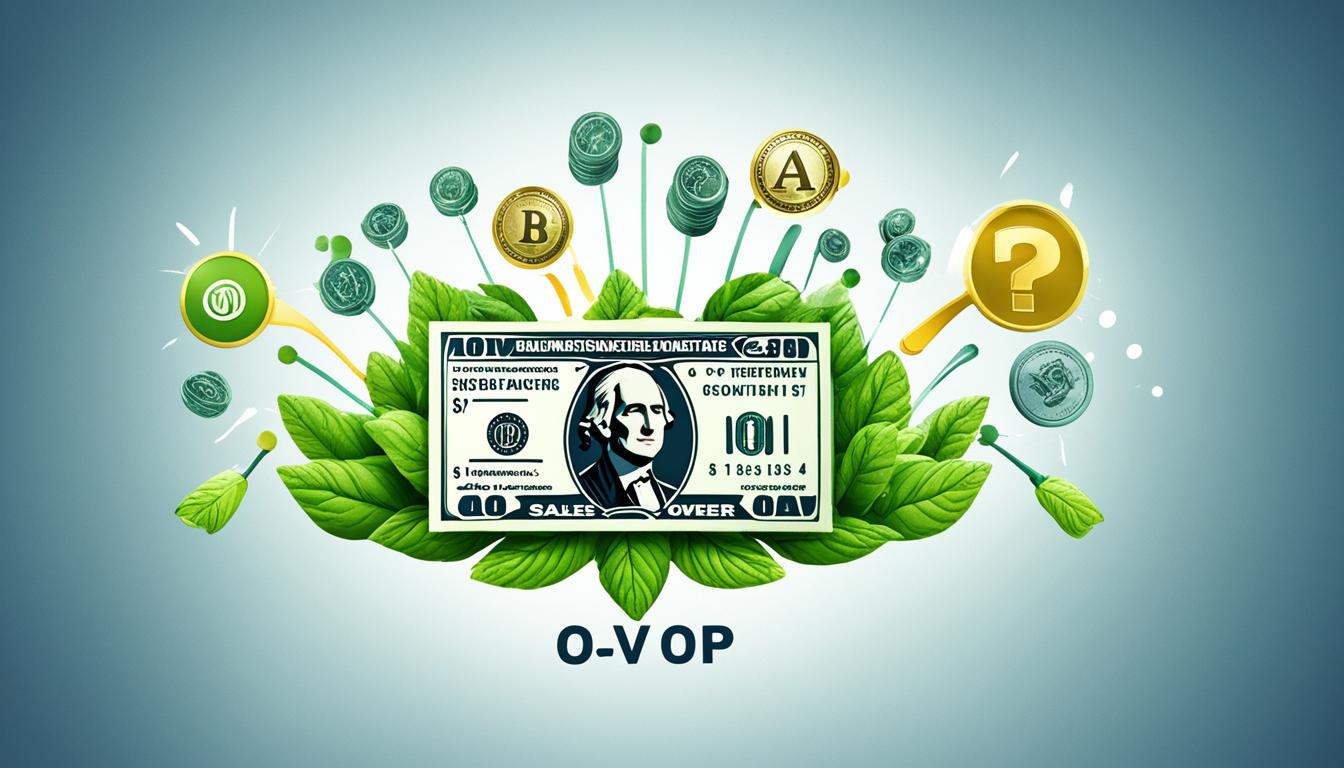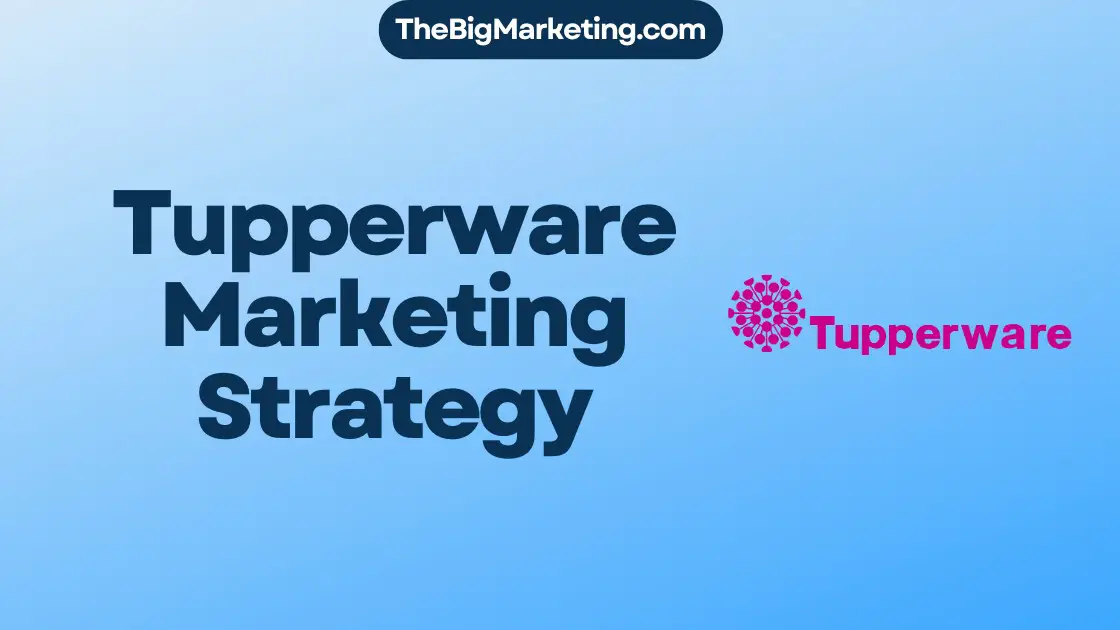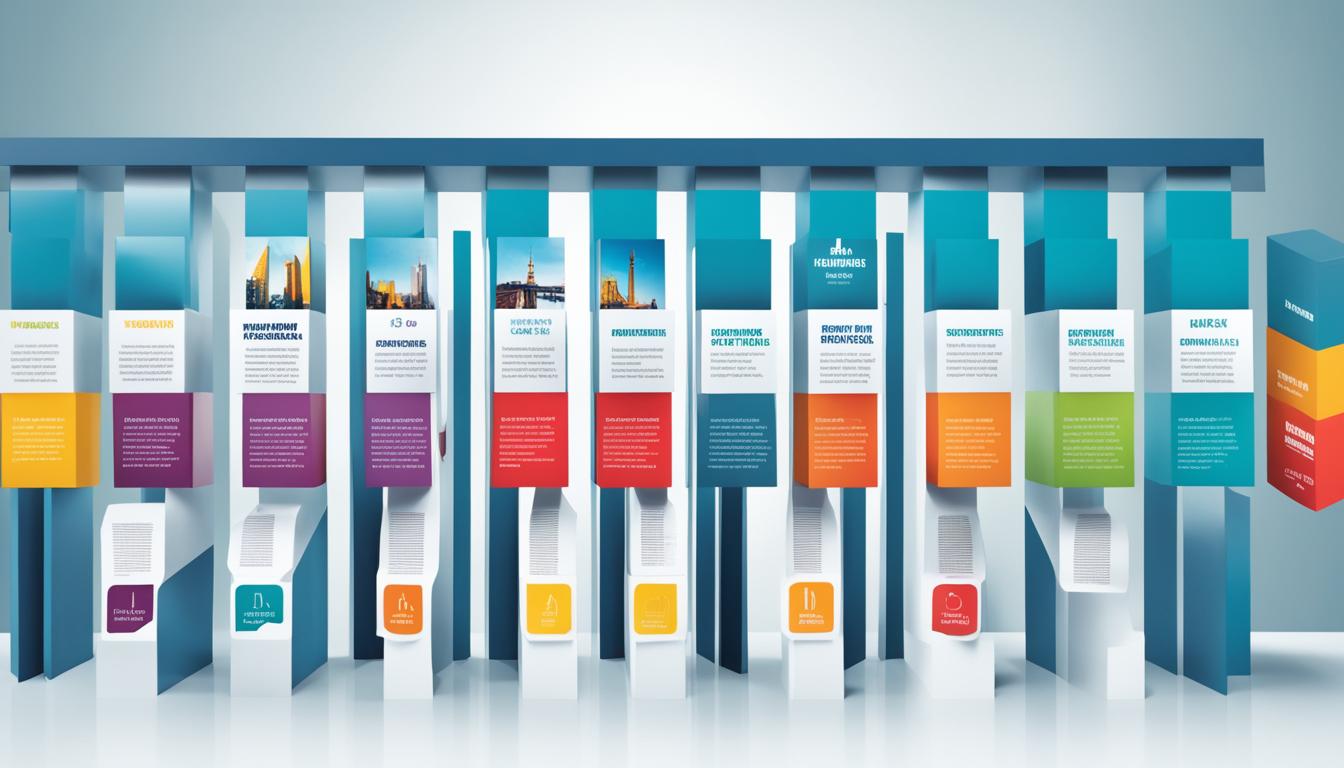Test marketing is a crucial process that businesses undertake to assess consumer response to a product or marketing campaign. By making the product or campaign available on a limited basis in test markets, businesses can gather valuable feedback from real-world consumers before committing to a full-scale launch. This method allows organizations to minimize risks, refine strategies, and optimize their offerings to align with customer needs.
Test marketing can be conducted at different stages, whether in the early phases of product development or prior to a full product launch. It aims to create anticipation and generate buzz surrounding a new product or campaign, enabling businesses to gauge market demand accurately.
Key Takeaways:
- Test marketing is a method used to assess consumer response to a product or marketing campaign on a limited scale before a full launch.
- It helps businesses gather real-world feedback to refine their strategies and optimize their offerings.
- Test marketing can be conducted through various methods, such as limited geographic releases, online availability, or distribution of samples.
- Benefits of test marketing include reducing the risk of product failure, generating buzz and excitement, and optimizing marketing strategies.
- Examples of test marketing include beta testing in software development and A/B testing in online marketing.
Benefits of Test Marketing
Conducting test marketing offers several key benefits for businesses. By implementing this strategy, companies can gather valuable customer satisfaction feedback before making significant investments. This feedback provides valuable insights into consumer behavior and preferences, enabling organizations to optimize their final product or campaign for maximum success.
One of the notable advantages of test marketing is its ability to generate buzz and excitement. By creating a sense of exclusivity and anticipation, test marketing generates additional interest and demand when the product or campaign is eventually released on a wider scale. This increased excitement can translate into higher sales and market penetration.
Another important benefit of test marketing is its ability to reduce the risk of product failure. By allowing businesses to gather real-world feedback and evaluate consumer response, test marketing helps identify and address potential issues or concerns early in the process. This valuable feedback enables companies to refine their marketing strategies and make adjustments to increase the chances of success.
Test marketing also provides an opportunity for businesses to engage with their target audience and build brand loyalty. By involving consumers in the product development or campaign testing phase, companies can create a sense of partnership and customer-centricity. This engagement fosters a stronger connection between the brand and its customers, increasing the likelihood of long-term customer satisfaction and loyalty.
Overall, the benefits of test marketing are vast, ranging from risk reduction to increased consumer engagement and optimized marketing strategies. By leveraging the power of test marketing, businesses can gain valuable insights, minimize potential pitfalls, and enhance their overall success in the market.
Additional Benefits of Test Marketing:
- Opportunity to fine-tune product features and design based on consumer feedback
- Identification of potential market segments and the most profitable target audience
- Validation of pricing strategies to maximize profitability
- Insights into the effectiveness of different marketing messages and channels
- Enhanced understanding of competitors’ strengths and weaknesses
Examples of Test Marketing
Test marketing is a versatile strategy that can be applied across various industries to gauge consumer response and optimize marketing efforts. Here are some noteworthy examples of test marketing:
1. Software Development
In the realm of software development, beta testing or user acceptance testing is a prevalent example of test marketing. Before the official release of a software product, a select group of users is chosen to try out the software and provide feedback. This feedback helps identify any bugs or usability issues and allows developers to make necessary improvements before launching the product to a wider audience.
2. Retail Test Marketing
Retail test marketing involves placing a limited quantity of items or offering free samples in specific target markets to gauge consumer response and predict market demand. By observing the reception and sales of the test products, businesses can fine-tune their marketing strategies, pricing, and product features before a broader launch. This allows them to identify potential hurdles or product improvements, minimizing risks and maximizing success.
3. Online Marketing Strategies
Online marketing takes advantage of test marketing through A/B testing. This involves presenting different versions of advertisements or marketing techniques to targeted audiences and analyzing the effectiveness of each version in terms of click-through rates, conversions, and other performance metrics. A/B testing provides valuable insights into what resonates with consumers and helps optimize online marketing campaigns for maximum impact.
| Industry | Key Test Marketing Methods |
|---|---|
| Software Development | Beta testing, user acceptance testing |
| Retail | Placing limited-quantity items, offering free samples |
| Online Marketing | A/B testing of advertisements, marketing techniques |
Risks of Test Marketing
While test marketing offers numerous benefits, it is essential to consider the inherent risks involved in this strategy. Understanding these risks allows businesses to better evaluate and mitigate potential challenges associated with test marketing.
1. Damage to Brand Reputation
One of the primary risks of test marketing is the potential for the product or campaign to receive a negative response, leading to damage to the brand’s reputation. If the target market does not respond favorably, it can tarnish the brand image and impact future sales.
2. Negative Word-of-Mouth
Another risk is the generation of negative buzz and word-of-mouth when customers become aware that a product or campaign is being tested. Unfavorable comments or reviews can spread quickly and influence consumer perceptions, making it harder to gain market traction.
3. Inaccurate Results
Improperly conducted test marketing can yield inaccurate results, leading to flawed decision-making. Factors such as an inadequately representative test market or biased sample selection can compromise the reliability and validity of the gathered feedback.
By recognizing these risks and implementing appropriate measures to address them, businesses can navigate the complexities of test marketing and increase their chances of success.
Conducting Test Marketing
When it comes to test marketing, there are various methods that can be employed to gather valuable insights and feedback. One common approach is to release the product or campaign in a limited geographic area or make it available online on a limited basis. This allows businesses to gauge consumer response and measure the effectiveness of their marketing strategies.
Distributing samples or offering coupons can also be effective in generating interest and gathering feedback from potential customers. By providing consumers with a tangible experience of the product, businesses can obtain valuable insights into consumer preferences and make informed decisions regarding product improvements or marketing campaign adjustments.
Before embarking on a test marketing effort, it is crucial to have a clear plan and goals in mind. This includes defining the target market, determining the scope of the test, and establishing measurable objectives. A well-designed test marketing plan enables businesses to collect relevant data and evaluate the potential success of their product or campaign.
Overall, conducting test marketing allows businesses to validate their ideas, refine marketing strategies, and reduce the risks associated with a full-scale product launch. By leveraging different test marketing methods and having a strategic approach, businesses can gain valuable insights that will inform their future marketing decisions.
Benefits of Conducting Test Marketing
- Validates the potential success of a product or marketing campaign
- Provides valuable insights into consumer preferences and behavior
- Helps optimize marketing strategies and refine the final product
- Reduces the risks associated with a full-scale launch
Consumer Goods Test Market
Consumer goods test marketing focuses on products used directly by consumers. It involves evaluating consumer behavior and gathering feedback on trial, repeat, adoption, and purchase of the product.
There are different techniques for gathering feedback in consumer goods test marketing:
Sales Wave Market Testing
Sales wave market testing is a method where the product is introduced to different regions, and the response is monitored and analyzed. It helps determine the demand and potential success of the product in different markets.
Simulated Market Testing
Simulated market testing involves creating a simulated market environment to assess consumer behavior. It can be conducted through surveys, focus groups, or virtual simulations, providing valuable insights before launching the product.
Controlled Market Testing
Controlled market testing involves carefully selecting a group of consumers and providing them with the product to gather feedback. It allows for a controlled environment to measure consumer response and make informed decisions based on the collected data.
Standard Market Testing
Standard market testing refers to conducting a test launch in a specific region or market. It gives businesses an opportunity to assess consumer acceptance, demand, and overall success of the product before expanding it to a wider audience.
By utilizing these different techniques, businesses can gain valuable insights into consumer behavior and make data-driven decisions regarding their consumer goods products.
Industrial Goods Test Market
Industrial goods test marketing focuses on goods used in the manufacturing of other products. It plays a crucial role in ensuring that these goods meet the necessary standards and requirements for successful integration into the production process.
Within the industrial goods test market, two types of tests are commonly conducted:
1. Alpha Testing
In alpha testing, prototypes of the industrial goods are distributed within the company to employees and stakeholders for feedback. This internal testing process allows for improvements to be made based on the valuable insights provided by those familiar with the product and its application.
2. Beta Testing
Beta testing of industrial goods involves conducting trials with external consumers in real-world conditions. This allows for observations and evaluations of the product’s performance and usability within different manufacturing environments. The data collected from beta testing provides valuable information for further refinement and optimization of the industrial goods.
The industrial goods test market plays a crucial role in ensuring that the goods meet the necessary quality standards and fulfill their intended purpose in the manufacturing industry. By conducting both alpha and beta tests, businesses can gather comprehensive feedback, make necessary improvements, and increase the chances of successful integration into the manufacturing process.
A/B Test Market
A/B testing, also known as marketing effectiveness testing, is a widely used method in digital marketing. It involves comparing two versions of something to determine their effectiveness. This testing method can be applied to various marketing channels, such as Google Ads or Facebook Ads, to assess engagement, click-through rates, and purchase rates.
A/B testing allows marketers to gather valuable data and insights on consumer behavior and preferences. By presenting two versions of an advertisement, landing page, or marketing campaign to different segments of the target audience, marketers can determine which version performs better in terms of driving conversions and achieving marketing objectives. This data-driven approach helps businesses make informed decisions and optimize their marketing strategies.
For example, a company running a Facebook Ads campaign can create two variations of an ad, each with a different headline or call-to-action. By randomly showing these variations to different groups of users, the company can analyze which version generates a higher click-through rate or conversion rate. Based on the results, they can then allocate their ad spend towards the more effective version, maximizing their return on investment.
A/B testing can also be used to improve website usability and user experience. By testing different design elements, colors, layouts, or navigation structures, businesses can identify which version leads to higher engagement, longer time spent on the site, or lower bounce rates. This information can then be used to optimize the website and create a more user-friendly experience, ultimately driving conversions and revenue.
The image above illustrates the A/B test market in action, showcasing the process of comparing two versions and analyzing the results. Through careful testing and analysis, businesses can refine their marketing strategies, improve customer satisfaction, and drive revenue growth.
Significance of Test Marketing
Test marketing plays a significant role in gaining valuable insights from the target market. By conducting test marketing campaigns, businesses can gather valid, reliable, and timely data that informs their decision-making process and allows them to adjust their strategies to better resonate with their target audience.
One of the primary benefits of test marketing is its ability to evaluate the potential of a product or marketing campaign before a full-scale launch. This evaluation helps businesses identify any potential issues or areas of improvement, enabling them to refine their product or campaign to increase its chances of success in the market.
Additionally, test marketing allows organizations to gain competitive advantages. By analyzing the response and feedback received during test marketing, businesses can identify unique selling points that differentiate their product or campaign from competitors, helping them position themselves more effectively in the market.
Test marketing also generates honest customer feedback, which is invaluable for businesses. By releasing their product or campaign in a limited capacity to real-world consumers, businesses can gather authentic and unbiased feedback, helping them understand how their target audience perceives and interacts with their offering. This feedback can shape product development and marketing strategies to better align with customer needs and preferences.
Furthermore, test marketing helps reduce the risk of product failure. By conducting small-scale tests and gathering data on consumer response, businesses can identify any potential issues or challenges early on and make necessary adjustments. This proactive approach minimizes the risk of investing significant resources into a product or campaign that may not resonate with the target market.
Ultimately, test marketing enables businesses to refine their marketing strategies. By analyzing the response and feedback received during test marketing, businesses can gain valuable insights into consumer behavior and preferences. These insights can then be used to optimize messaging, promotional tactics, and the overall customer experience, ensuring that marketing efforts are effectively tailored to the target audience.
Test Marketing Example
Let’s take a look at an example to illustrate the significance of test marketing. Consider a company that is planning to launch a new line of athletic shoes. Before investing in a full-scale production and marketing campaign, the company decides to conduct test marketing in select cities.
During the test marketing phase, the company gathers feedback from real consumers who have tried the shoes. This feedback reveals that the shoes are highly comfortable and durable but could benefit from additional styling options. Armed with this information, the company refines the shoe designs to include more variety in terms of colors and styles.
Once the updated designs are implemented and feedback is positive during the test marketing phase, the company can confidently proceed with the full-scale launch. By leveraging test marketing insights, the company has optimized its product based on real consumer feedback, reducing the risk of product failure and increasing the likelihood of success in the market.
In summary, test marketing is a critical step in the product development and marketing process. It allows businesses to gather data and insights directly from the target market, enabling informed decision-making, refining strategies, and minimizing risks. By embracing the significance of test marketing, businesses can increase their chances of success in the competitive market landscape.
Types of Test Marketing
Test marketing can be categorized based on different audiences and the testing process. This section explores the various types of test marketing, including:
-
Consumer Goods Test Marketing
Consumer goods test marketing focuses on products used directly by consumers. It involves evaluating consumer behavior and gathering feedback on trial, repeat, adoption, and purchase of the product. Various techniques are used in consumer goods test marketing, such as sales wave market testing, simulated market testing, controlled market testing, and standard market testing.
-
Industrial Goods Test Marketing
Industrial goods test marketing focuses on goods used in manufacturing other products. It involves two types of tests:
- Alpha testing: This test is conducted within the company, where prototypes are distributed to employees for feedback.
- Beta testing: This test is conducted with external consumers, providing real-world data on the product’s performance and usability.
-
Marketing Effectiveness Testing (A/B Testing)
Marketing effectiveness testing, also known as A/B testing, is commonly used in digital marketing. It compares two versions (A and B) of something to determine their effectiveness. This can be applied to various marketing channels, such as Google Ads or Facebook Ads, to assess engagement, click-through rates, and purchase rates of different elements within the ad or campaign.
To understand the diverse market responses and tailor marketing strategies accordingly, businesses often utilize a combination of these test marketing approaches.
Conclusion
Test marketing serves as a vital tool for businesses to collect valuable feedback and assess the potential success of their products or marketing campaigns. By leveraging test marketing, companies can optimize their strategies, mitigate risks, and align their offerings with customer needs. Understanding the benefits, examples, risks, and methods of conducting test marketing enables businesses to make well-informed decisions and increase their chances of thriving in the market.
Through test marketing, companies can gather customer satisfaction feedback and gain valuable insights into consumer behavior and preferences. This information helps refine the final product or campaign, ensuring maximum appeal to the target audience. Additionally, test marketing generates buzz and excitement, creating anticipation among consumers and fueling demand upon the product’s official release.
While test marketing presents numerous advantages, it is not without risks. Poorly executed test marketing initiatives can result in negative publicity and harm the brand’s reputation. Therefore, it is imperative for businesses to conduct test marketing with transparency and accuracy, employing appropriate methodologies to obtain reliable results.






